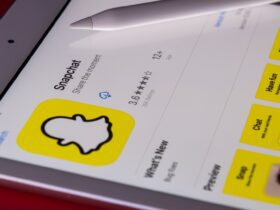As technology improves the way we learn and teach, educational apps are becoming a more popular approach to offer tailored and interesting learning experiences. These applications have the potential to alter education and make it available to students all around the world thanks to their ability to provide a wide variety of content, interactive learning tools, and features.
In this article, we explore the types of the apps available, the necessary features of educational app development, and the potential benefits for learners of all ages.
What is an Educational Application
A software program developed to assist learning and education across diverse disciplines is referred to as an educational application. These programs can include a variety of features like interactive lessons, quizzes, videos, and evaluations and can be created for various platforms such as desktop, mobile, or web-based.
Why its Development is Beneficial in 2023
Education can gain from educational applications in a number of ways in 2023. First of all, they give pupils individualized learning experiences in a novel approach. Second, they can solve problems like limited funds and packed classes, allowing for self-paced learning. Thirdly, they can give students in underdeveloped nations, wherever they may be, access to an affordable education.
Some Statistics
Online courses and degree programs have been increasingly popular over the last several years as more students choose them. Over 2.2 million students were enrolled in distance education courses at postsecondary institutions in the United States during the fall of 2020, according to the National Center for Education Statistics.
The global online education market is predicted to reach $66.7 billion by 2028, growing at a compound annual growth rate of 28%, according to a study by Research and Markets. In addition, the COVID-19 epidemic has accelerated the expansion of online learning as many educational institutions switch to this format in order to comply with social distancing guidelines.
Overall, these statistics demonstrate the increasing importance and prevalence of online education in today’s society, and suggest that online education will continue to grow and evolve in the coming years.
Benefits of Edu Apps


The following are just a few benefits that educational apps offer to teachers and students alike:
Personalized learning: The possibility for these apps to provide a tailored learning experience that caters to the specific requirements and interests of individual students.
Flexibility: With the flexibility offered, students can learn at their own pace, in their own place, and at their preferred time.
Interactive content: Interactive elements like videos, games, and quizzes that are regularly used in such applications can improve the learning process and make it more interesting and pleasurable.
Accessibility: Multiple devices, including smartphones and tablets, can be used to access educational applications, making them accessible to students from every socioeconomic group.
Cost-effectiveness: Due to their lower resource requirements and ability to be reused, the apps provide a more affordable alternative to traditional classroom-based education.
Real-time feedback: Educational applications have the ability to give students immediate feedback on their progress, enabling them to identify areas for growth and modify their learning strategy accordingly.
Overall, such apps offer a number of benefits that can enhance the learning experience and support the development of knowledge and skills.
Examples
Due to their effective use, a number of educational applications have grown in popularity among learners as well as educators. Such apps include, for instance:
Duolingo: An app for learning languages that utilizes gamification techniques to make the language learning process enjoyable and stimulating.
Khan Academy: A digital learning platform that provides a huge selection of free educational articles and videos on a range of subjects, including history, humanities, science, and math.
Quizlet: A tool that uses games, quizzes, and flashcards to aid students in memorizing.
TED-Ed: An app that provides free educational videos and lessons from TED speakers on a variety of topics, from science and technology to psychology and culture.
Coursera: A website that provides access to high-quality education for everyone with an internet connection by offering courses and degree programs from prestigious universities across the globe.
Google Classroom: A free online tool that gives teachers the ability to manage assignments, interact with students, and monitor their progress.
Rosetta Stone: A language-learning app that uses a combination of immersive techniques, such as speech recognition and interactive content, to teach new languages.
Types
There are many different kinds of educational applications available, each designed to address different learning needs and goals. Some of the most common types of include:
Language learning apps: Through gamification and interactive content, these apps assist students in learning a foreign language.
Study apps: Through the use of flashcards, tests, and other tools, these apps assist students in learning and memorization of information.
Learning management system (LMS) apps: With the help of these apps, teachers may manage student assignments, interact with students, and monitor their progress.
Math and science apps: Students can learn math and science using the interactive tools and resources offered by these apps.
Test preparation apps: By offering practice questions and advice for effective test-taking techniques, these apps assist students in getting ready for standardized examinations like the SAT or ACT.
Coding and programming apps: Through gamification and interactive content, these apps typically instruct students in the fundamentals of coding and programming.
Multimedia apps: In order to improve their learning experience, these apps give students access to multimedia materials including podcasts, films, and virtual field trips.
Necessary Features
The necessary features for an educational application will depend on the specific goals and needs of the application. However, some common features that are often included in successful apps include:
User-friendly interface: A user-friendly interface that is easy to navigate and understand is essential for any educational app.
Personalized learning: The ability to tailor the learning experience to the needs and interests of individual learners, often through adaptive algorithms.
Interactive content: Educational apps should include interactive content, such as quizzes, games, and videos, to make learning more engaging and fun.
Progress tracking: The ability to track student progress and provide feedback on performance is important for ensuring that learners are making progress and meeting their learning goals.
Social sharing and collaboration: The ability to share content and collaborate with other learners can enhance the learning experience and provide opportunities for peer support and feedback.
Offline access: The ability to access content offline can be important for learners who may not always have access to the internet.
Security and privacy: Educational apps should prioritize security and privacy, protecting user data and ensuring that users feel safe and secure while using the app.
Overall, these features can help to support the development of an effective and engaging educational app, but it’s important to tailor the features to the specific needs and goals of the app and its users.
Development Steps
When developing an educational app, there are several important steps and nuances to consider in order to create an effective and engaging learning experience for users. Some of these steps and nuances include:
Define the target audience: It’s important to define the target audience for the educational app, such as students of a particular age group, learners with specific interests or goals, or educators looking for a specific tool.
Conduct research: For the design and development of the app, gather information about the target audience, such as their learning needs, tastes, and behaviors.
Define learning objectives: To make sure that the app’s content and features support the objectives of learning, establish clear, realizable learning goals.
Create a prototype: Create a prototype of the app to test and refine the design and functionality before fully developing the app.
Develop a minimum viable product (MVP): Develop an MVP that includes only the essential features and functionality, to test and validate the app’s value and usability.
Test and iterate: Continually get and take into account user feedback to test and improve the app’s usability, content, and functionality.
Consider accessibility: Make sure users with different abilities, such as those who have hearing or visual impairments, can utilize the app.
Prioritize security and privacy: To protect user data and make sure the app offers users a secure environment, give security and privacy high attention during the development process.
How to Make Money from Such Development
There are several ways to make money on an educational application, including:
Freemium model: Offer a free basic version of the application, with paid access to premium features or content like additional practice questions or advanced learning modules.
Subscription model: Charge users a monthly or yearly subscription fee to access the app’s full range of features and content.
In-app purchases: Offer additional features, content, or virtual goods within the app that users can purchase, such as extra practice questions or additional learning modules.
Sponsorship or advertising: Create revenue from ad clicks or impressions by working with sponsors or advertisers to display targeted ads or sponsored content inside the app.
Licensing content: By obtaining a license and incorporating it into the app, you can charge for educational resources including courses, videos, and textbooks.
White labeling: Charge for the development and licensing of a version of the program made specifically for businesses or educational institutions.
Conclusion


For learners of all ages, the rise of educational applications has ushered in a new era of adapted and interesting learning experiences. These apps offer a wide range of features that help improve learning, including interactive learning tools, personalized material, and self-paced learning. With new options for accessible and individualized learning emerging as a result of the rapid advancement of technology, educational apps are poised to become a crucial tool for educators and students everywhere.
In order to create engaging and successful learning experiences that meet the needs of learners everywhere, it is essential for developers and educators to collaborate in order to identify the key elements that make such apps successful.






























